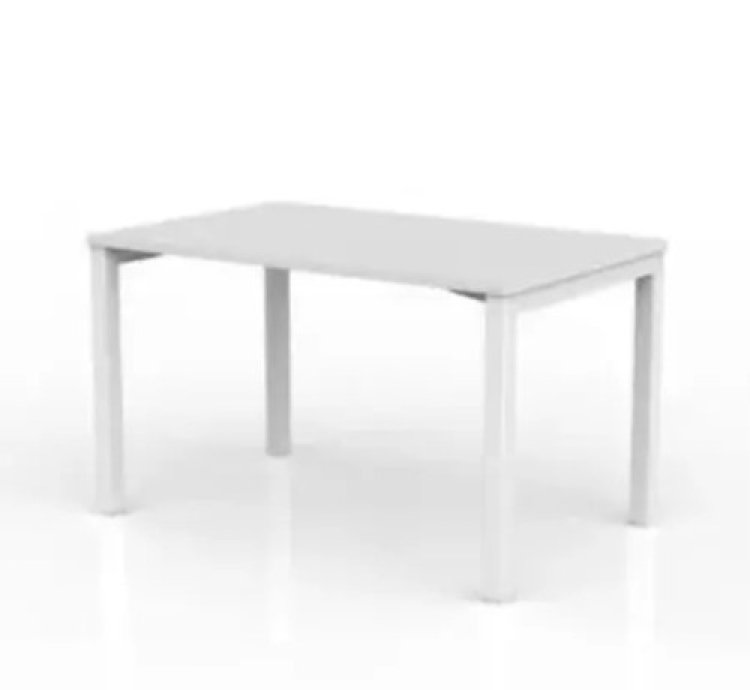How to Choose the Perfect Ergonomic Table for Your Workspace
Find out how to select the perfect ergonomic table for your workspace, ensuring comfort, productivity, and proper posture alignment.
Share this Post to earn Money ( Upto ₹100 per 1000 Views )

Choosing the perfect ergonomic table for your workspace is essential for comfort, productivity, and maintaining good posture. Here's a comprehensive guide to help you make the right choice:
1. Determine the Right Height
- Standard Height: A typical ergonomic table height is around 28-30 inches (71-76 cm) for most people when sitting.
- Adjustable Height Tables: Opt for a sit-stand desk to switch between sitting and standing positions, helping reduce fatigue and improve circulation. These are especially helpful if you spend long hours at your desk.
2. Consider the Desk Size
- Workspace Needs: Ensure the desk is large enough to fit your monitors, keyboard, mouse, and any additional accessories like notebooks or tablets.
- Room Dimensions: Measure your available space to avoid overcrowding. Consider compact desks for small spaces or L-shaped desks for corners.
- Depth: A depth of at least 24 inches (60 cm) is recommended for comfortable monitor placement and desk usage.
3. Focus on Material and Build Quality
- Material: Choose a sturdy, durable material like:
- Wood or Engineered Wood: Offers a classic and robust look.
- Metal Frames with Laminated Tops: Durable and easy to clean.
- Glass: A modern and aesthetic choice, though prone to fingerprints.
- Weight Capacity: Ensure the desk can support the weight of your equipment, especially for gamers or creatives with multiple monitors and peripherals.
4. Look for Cable Management Options
- Built-in Cable Ports or Trays: These help organize and hide wires, keeping your desk tidy.
- Under-Desk Cable Management: Look for desks with dedicated space for cable management to reduce clutter.
5. Assess Ergonomic Features
- Curved or Beveled Edge: Reduces pressure on your wrists and forearms.
- Keyboard Tray: Allows you to position your keyboard at the correct height for typing comfort.
- Monitor Stand or Riser: Keeps your monitor at eye level to reduce neck strain.
6. Check for Compatibility with Accessories
- Monitor Arms or Mounts: If you plan to use these, ensure the desk surface is sturdy and thick enough to support clamps.
- Drawer Space or Storage: Desks with built-in drawers or shelves can help keep your workspace organized and clutter-free.
7. Choose an Adjustable or Sit-Stand Desk
- Electric Sit-Stand Desks: Effortlessly adjust the height with a push of a button.
- Manual Sit-Stand Desks: More affordable, requiring manual adjustment.
- Fixed Ergonomic Desks: If you prefer a seated-only option, ensure it is compatible with your chair height.
8. Ensure Stability
- Solid Base: Look for desks with a stable base and minimal wobble, especially for height-adjustable models.
- Anti-Slip Feet: Prevents the desk from shifting on hard surfaces.
9. Match the Desk to Your Style
- Minimalist Design: Great for small spaces or modern aesthetics.
- Traditional Wooden Desk: Complements a classic or homey setup.
- Gaming Desk: Designed with features like RGB lighting and cup holders for an immersive gaming experience.
10. Budget Considerations
- Budget-Friendly: ₹5,000–₹10,000 for basic ergonomic desks.
- Mid-Range: ₹10,000–₹25,000 for sit-stand desks and desks with better materials.
- High-End: ₹25,000+ for premium materials, advanced features, and branded designs.
11. Check Reviews and Warranty
- Read customer reviews to gauge quality and ease of assembly.
- Look for desks with at least a 1–2 year warranty to ensure durability.
12. Test the Desk (if possible)
- Visit showrooms or furniture stores to test the desk’s height, stability, and overall comfort.
- Ensure the desk complements your chair and allows enough legroom.
Additional Tips for Ergonomics
- Pair your desk with an ergonomic chair and monitor mount for maximum comfort.
- Maintain a distance of about 20–30 inches (50–76 cm) between your eyes and the monitor.
- Position the top of the monitor at or slightly below eye level to reduce neck strain.

 Mohit Varma
Mohit Varma 










